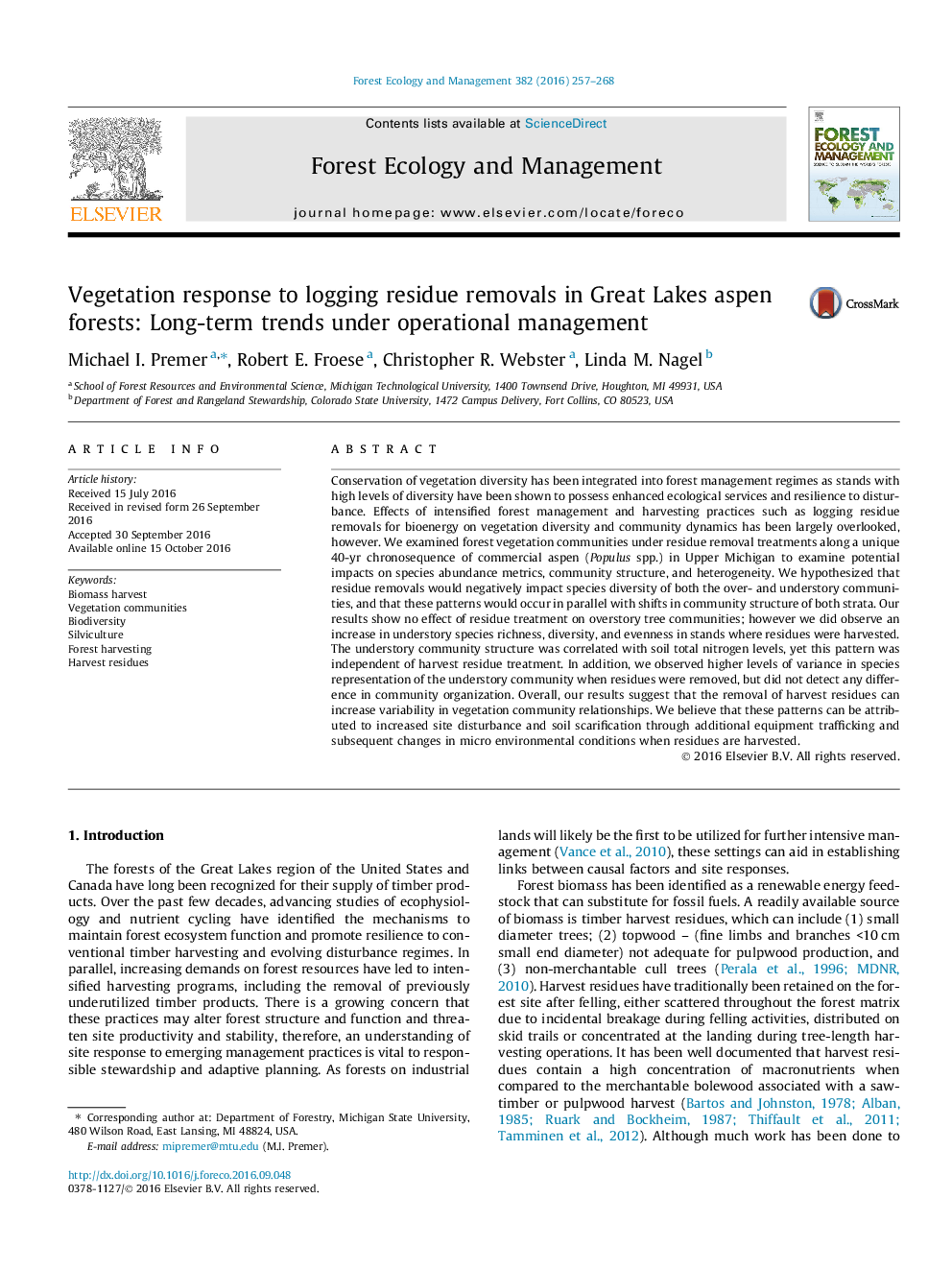| کد مقاله | کد نشریه | سال انتشار | مقاله انگلیسی | نسخه تمام متن |
|---|---|---|---|---|
| 4759712 | 1421376 | 2016 | 12 صفحه PDF | دانلود رایگان |
عنوان انگلیسی مقاله ISI
Vegetation response to logging residue removals in Great Lakes aspen forests: Long-term trends under operational management
ترجمه فارسی عنوان
واکنش گیاهخواری به انتقال زباله های باقیمانده در جنگل های آسپن های بزرگ دریاچه: روند درازمدت تحت مدیریت عملیاتی
دانلود مقاله + سفارش ترجمه
دانلود مقاله ISI انگلیسی
رایگان برای ایرانیان
کلمات کلیدی
برداشت زیست توده، جوامع گیاهی تنوع زیستی، جنگلداری، برداشت جنگل، برداشت بقایای،
موضوعات مرتبط
علوم زیستی و بیوفناوری
علوم کشاورزی و بیولوژیک
بوم شناسی، تکامل، رفتار و سامانه شناسی
چکیده انگلیسی
Conservation of vegetation diversity has been integrated into forest management regimes as stands with high levels of diversity have been shown to possess enhanced ecological services and resilience to disturbance. Effects of intensified forest management and harvesting practices such as logging residue removals for bioenergy on vegetation diversity and community dynamics has been largely overlooked, however. We examined forest vegetation communities under residue removal treatments along a unique 40-yr chronosequence of commercial aspen (Populus spp.) in Upper Michigan to examine potential impacts on species abundance metrics, community structure, and heterogeneity. We hypothesized that residue removals would negatively impact species diversity of both the over- and understory communities, and that these patterns would occur in parallel with shifts in community structure of both strata. Our results show no effect of residue treatment on overstory tree communities; however we did observe an increase in understory species richness, diversity, and evenness in stands where residues were harvested. The understory community structure was correlated with soil total nitrogen levels, yet this pattern was independent of harvest residue treatment. In addition, we observed higher levels of variance in species representation of the understory community when residues were removed, but did not detect any difference in community organization. Overall, our results suggest that the removal of harvest residues can increase variability in vegetation community relationships. We believe that these patterns can be attributed to increased site disturbance and soil scarification through additional equipment trafficking and subsequent changes in micro environmental conditions when residues are harvested.
ناشر
Database: Elsevier - ScienceDirect (ساینس دایرکت)
Journal: Forest Ecology and Management - Volume 382, 15 December 2016, Pages 257-268
Journal: Forest Ecology and Management - Volume 382, 15 December 2016, Pages 257-268
نویسندگان
Michael I. Premer, Robert E. Froese, Christopher R. Webster, Linda M. Nagel,
